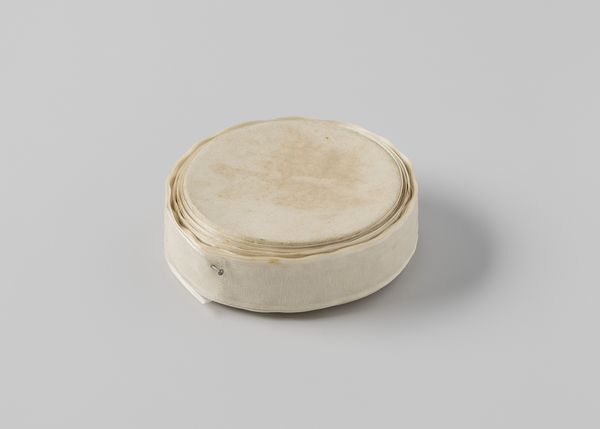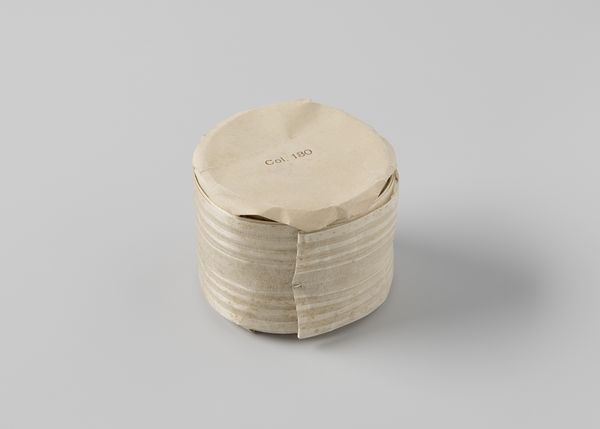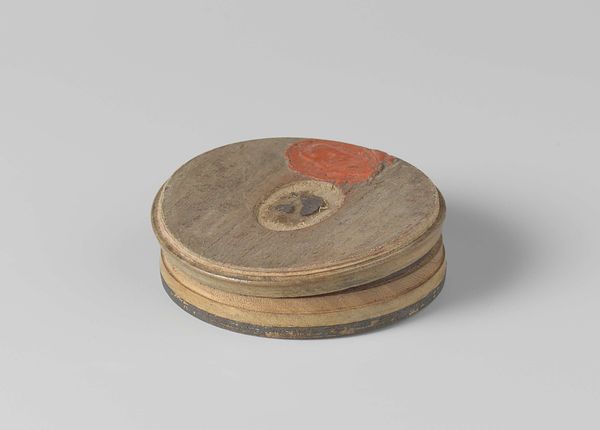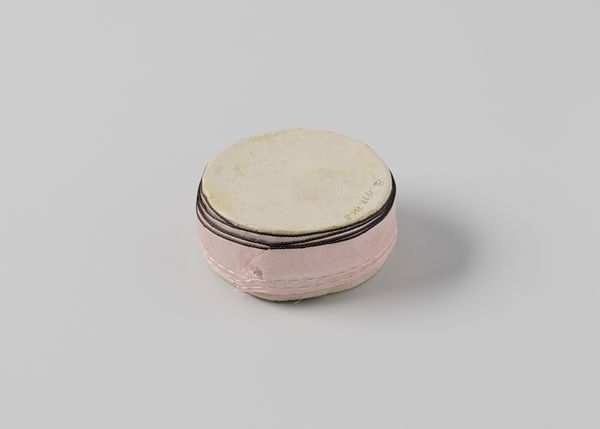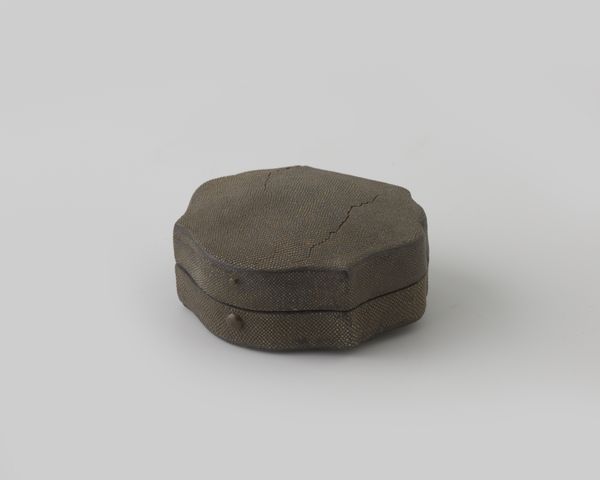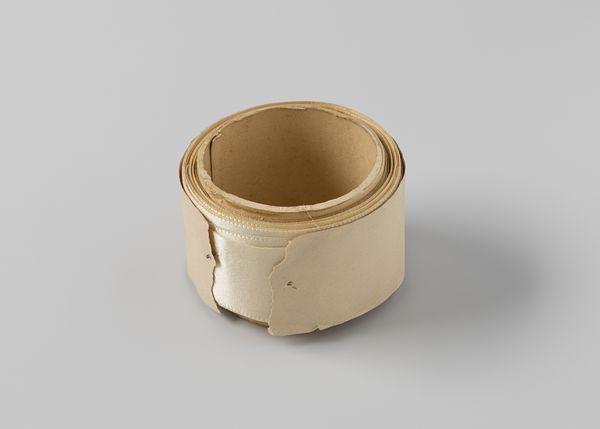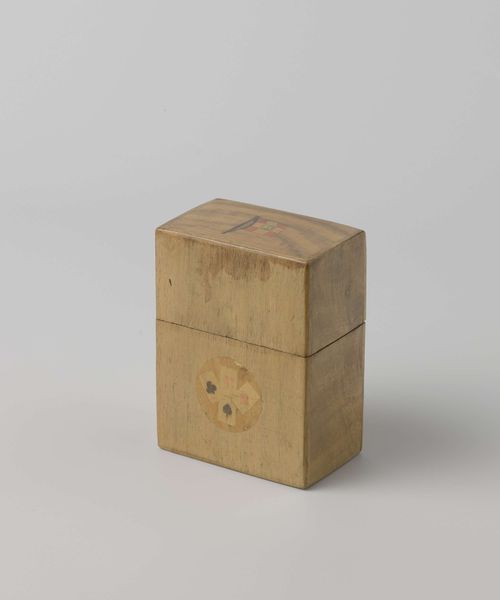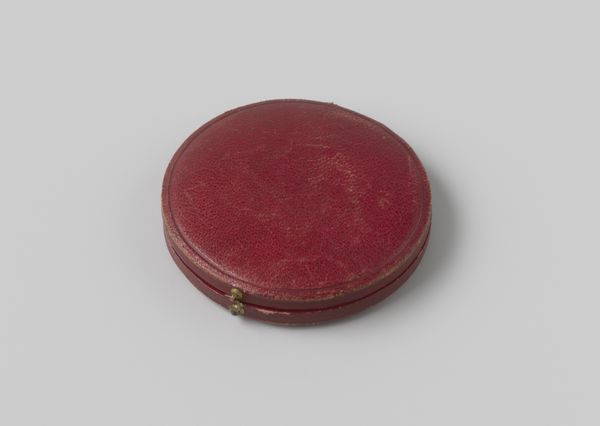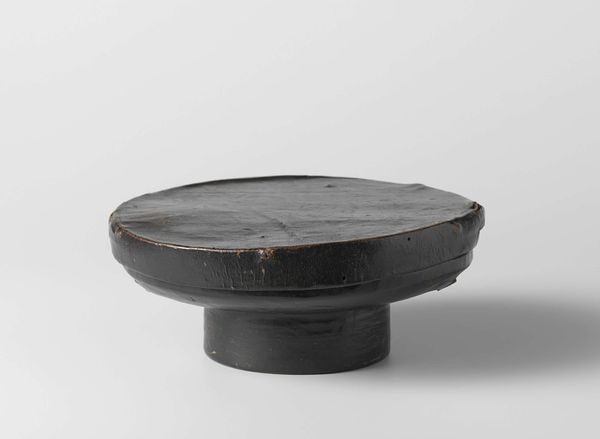
Doosje voor het groot ordeteken van de Orde van de Reunie van vice-admiraal A. A. Buyskes c. 1811
0:00
0:00
metal, photography
#
metal
#
photography
Dimensions: diameter 10.5 cm, height 3.3 cm
Copyright: Rijks Museum: Open Domain
Curator: What a perfectly unassuming little thing. There's something quite serene about this object. Editor: Yes, its quietness belies its purpose. This is a box made around 1811. Specifically, it's the "Doosje voor het groot ordeteken van de Orde van de Reunie van vice-admiraal A. A. Buyskes" – or "Box for the grand badge of the Order of the Reunion of Vice Admiral A. A. Buyskes". Curator: The order of reunion; it does imply the sociopolitical turmoil that followed the Napoleonic Era in Dutch History. It's made of metal, and although not easily visible in this view, the details must be rather intricate, considering its intended use. Editor: I imagine its presence would serve a particular political function. It speaks to how merit and loyalty are materialized in objects that were probably showcased, circulated, and seen as representations of power and statecraft. Did this box contribute to the cultural perception of Buyskes? Curator: Intriguing thought! Also, what was the nature of production? Was it commissioned, made in-house or through local artisans, what material extraction processes were followed in manufacturing this type of artifact? All are essential questions when trying to piece together the context surrounding its creation and life cycle. Editor: Definitely. Such boxes become symbols and are treated very carefully through generations to represent a kind of historical narrative, I imagine. The socio-economic networks tied into its crafting would unveil interesting intersections of power at the time of the French Empire. Curator: Precisely, the materials chosen, their accessibility, the skill required to assemble such piece—these aren't accidental. They speak volumes about the societal values being emphasized and are embedded as part of an agenda within the material world. Editor: Looking at the subdued hue, its patina...it makes me think of preservation versus exposure—how this simple metal container became a valuable historical signifier in time. Curator: Right, considering that this simple piece of utilitarian craftsmanship might unravel many narratives through the labor that lies within. It shifts how we interpret historical legacies. Editor: Agreed. The object invites a re-evaluation of value itself: what began as a humble container transformed into a cultural artifact imbued with multiple meanings through social and political trajectories.
Comments
No comments
Be the first to comment and join the conversation on the ultimate creative platform.

